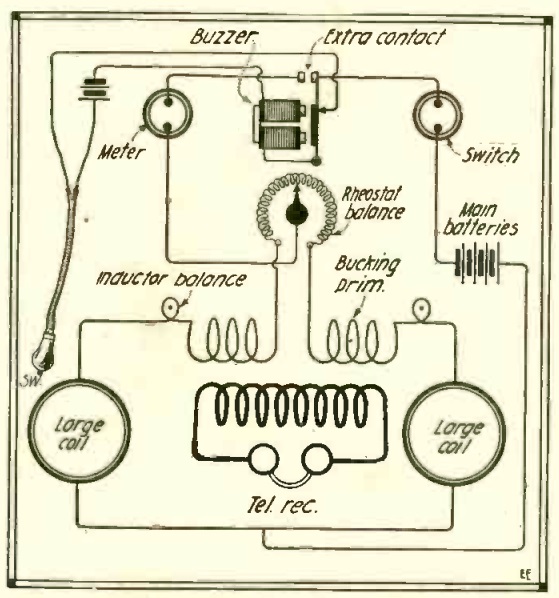 A hundred years ago this month, the June 1920 issue of Electrical Experimenter showed this ingenious metal detector. Like most metal detectors, it relies upon the inductance of a coil increasing in the presence of metal.
A hundred years ago this month, the June 1920 issue of Electrical Experimenter showed this ingenious metal detector. Like most metal detectors, it relies upon the inductance of a coil increasing in the presence of metal.
This one uses two identical coils. A buzzer is pulsing a voltage through them, but they are wound such that they are 180 degrees out of phase. Thus, the two signals will cancel out, and nothing will be heard through the headphones. But if one of the coils comes near metal, the inductance changes, and the two signals no longer cancel out. Thus, the buzzing can be heard through the headphones.
The circuit was said to be able to detect a one square foot piece of iron down five feet, or a quart of washers a foot down.

